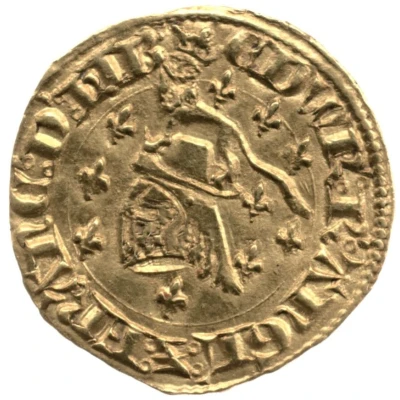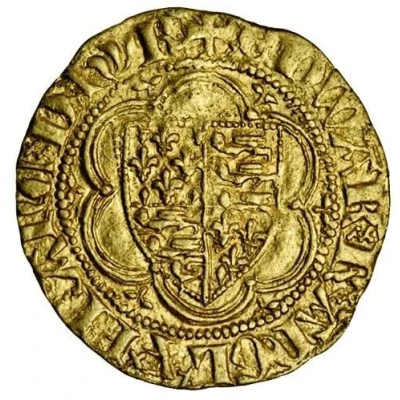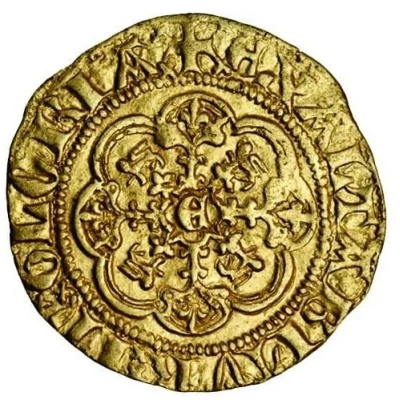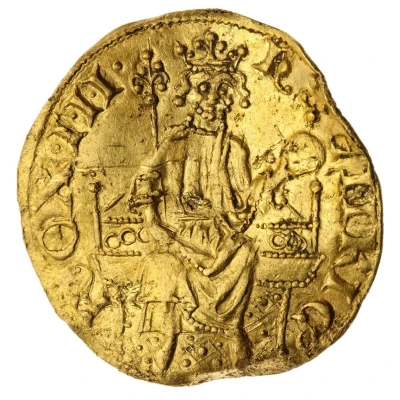
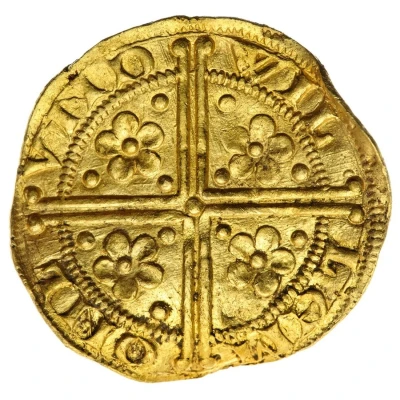

© Spink and Son
1 Gold Penny - Henry III ND
| Gold | 2.9 g | 21 mm |
| Issuer | England (United Kingdom, British Overseas Territories and Crown Dependencies) |
|---|---|
| King | Henry III (1216-1272) |
| Type | Standard circulation coin |
| Years | 1257-1272 |
| Value | 1 Gold Penny (1⁄12) |
| Currency | Pound sterling (1158-1970) |
| Composition | Gold |
| Weight | 2.9 g |
| Diameter | 21 mm |
| Shape | Round (irregular) |
| Technique | Hammered |
| Demonetized | Yes |
| Updated | 2024-10-09 |
| Numista | N#121424 |
|---|---|
| Rarity index | 97% |
Reverse
Voided long cross, pellets and flowers in angles
Script: Latin (uncial)
Lettering: WILLEM ON LVND :
Lettering (regular font): WILLEM ON LVND :
Translation: William of London
Comment
* Until the reign of King Henry III of England (1216–1272), any need in England for coins worth more than one penny, at the time a silver coin, was met by the use of Byzantine or Arabic gold and silver coins which circulated among merchants and traders. However, as commerce increased, so did the need for higher value coins. In 1257 Henry instructed his goldsmith, William of Gloucester, to produce a coinage of pure gold.* The gold penny was introduced, with a value of twenty pence. The coin's obverse showed the king enthroned, with the legend HENRICUS REX III (King Henry III), while the reverse contained a long cross extending to the edge, with a flower in each quarter, and the moneyer's name in the legend, thus WILLEM ON LUND (William of London).
* The gold penny was not popular. Carte, in his history of England, says that the citizens of London made a representation against them on 24 November 1257, and that the King was so willing to oblige them, that he published a proclamation, declaring that nobody was obliged to take it (the gold penny), and whoever did, might bring it to his exchange, and receive there the value at which it had been made current, a halfpenny on being deducted, probably for the coinage.
* Compared to its bullion weight (45 grains, twice that of a silver penny), the coin was undervalued. By 1265, the gold in the coin was worth twenty-four pence rather than twenty, and it is believed that most of the coins were melted down for profit by individuals. Gold coins would not be minted again in England until the reign of King Edward III about 70 years later.
* As all the coins were recalled and melted down, the gold penny completely disappeared from view, and all knowledge of its prior existence was forgotten. However, in the 1700s, documentation came to light indicating that it had been minted. Inevitably, a few coins escaped the melt—perhaps being lost. Now, a handful of the gold pennies have come to light—possibly eight in all.
Interesting fact
One interesting fact about the 1 Gold Penny - Henry III ND (1257-1272) coin is that it was minted during a time of great economic and political change in England. The coin was introduced as part of a new currency system implemented by King Henry III in 1257, which aimed to stabilize the English economy and replace the previous system of bartering with a standardized system of currency. The coin's design features a crowned bust of King Henry III on one side and a long cross with three pelicans on the other, symbolizing the king's devotion to Christianity and his role as a protector of the faith. Despite being made of gold, the coin was not widely used in everyday transactions due to its high value, but it played an important role in international trade and commerce during the Middle Ages.
